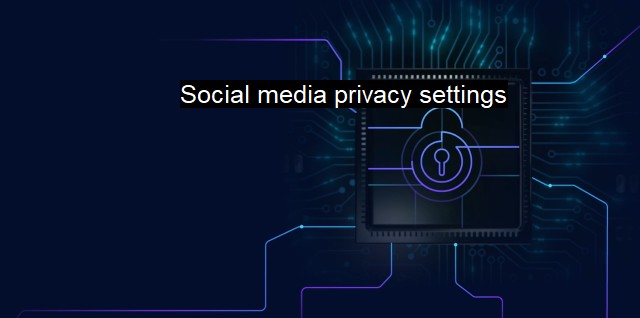What are Social media privacy settings?
Managing Your Privacy in a Digital World: Understanding Social Media Privacy Settings and Protecting Yourself from Cyber Threats
Social media privacy settings refer to the tools provided by social media platforms that allow users to control who can see their content and personal information. They play a crucial role in ensuring online safety and maintaining users' privacy. This is a current concern in the field of cybersecurity because social media networks are a common target for hackers and cybercriminals.Cybersecurity is the practice of defending electronic systems, networks, and data from digital attacks. In this context, social media privacy settings are the user's first line of defense against cyber threats. These settings allow users to limit the visibility of their profiles, control who can see their posts, and decide how businesses use their personal information. privacy settings provide users with a significant degree of regulation over how their online personas are seen and accessed.
When properly executed, these settings can limit the ability of hackers to access your information thereby reducing the likelihood of falling victim to phishing or other forms of malicious online activity. Whether it's banking details, credit card information, or personally sensitive data, a lot is at stake when privacy settings are neglected.
Antivirus programs also serve a crucial role in cybersecurity. They are software tools designed to detect and remove malware, including viruses, trojans, and spyware. Although not directly related, strong antivirus programs and properly customized social media privacy settings both everyone stay safe online.
Several antivirus capabilities extend beyond their traditional role, such as browser protection. For instance, effective antivirus programs can warn users if they are navigating unencrypted sites or shared phishing sites, which mimic legitimate sites to steal user credentials, and are often shared, intentionally or not, on social media.
Regulating social media privacy settings is not the ultimate solution to these cybersecurity issues. Even with the strictest settings, hackers and cybercriminals can still exploit any security vulnerabilities. Experts recommend combining the use of these privacy settings with other security measures like strong, unique passwords, multi-factor authentication, and frequent system updates. These strategies, along with robust antivirus software, can enhance overall protection against external threats.
While social media platforms offer various controls for users to manage their privacy settings, many users are unaware of these functionalities or fail to utilize them effectively. This inadvertently leaves their accounts, and potentially their linked information and devices, less secure. Consequently, there is an urgent need to raise public awareness about the importance of social media privacy settings to promote better cybersecurity habits. Users must understand and be willing to manage not only what personal information they share online but also who can access it.
Social media privacy settings have been under discussion in recent years due to concerns around data protection and privacy. Misuses of data by companies like Cambridge Analytica, where the personal details of 87 million Facebook users were harvested in contravention of the platform’s policy, highlight the importance of the right privacy settings. The issue is not only about keeping individuals secure from cyber threats, but also controlling what companies and corporations can do with user data.
In the context of cybersecurity and antivirus software, "social media privacy settings" refer to the tools that social media sites provide their users to restrict who can view their profiles and posts. They offer an important first line of defense against online threats that bypass many user's antivirus software. Nonetheless, no measure can provide complete protection against all kinds of threats. And while absolute security may remain elusive, a conscientious combination of social media privacy control, antivirus software, strong password use, and general digital literacy can go a long way towards ensuring a safer online environment.

Social media privacy settings FAQs
What are social media privacy settings?
Social media privacy settings are a set of options that allow users to manage who can see their content, who can find and contact them, and how their personal information is shared on social media platforms.Why is it important to adjust privacy settings on social media?
Adjusting privacy settings limit the amount of personal information available to strangers on the internet, reducing the risk of identity theft or cyber attacks.How to adjust privacy settings on social media?
The process of adjusting privacy settings depends on the specific platform, but generally, you can find the options in the settings or privacy section of your account. You can adjust the settings to limit who can see your posts, who can find and contact you, and what information is shared with third-party apps.How often should I review and adjust my social media privacy settings?
It's recommended to review your privacy settings on social media on a regular basis, especially when there is a change in the platform's policies or a data breach occurs. It's also important to review and adjust your settings whenever you add new personal information to your profile.| | A | | | B | | | C | | | D | | | E | | | F | | | G | | | H | | | I | | | J | | | K | | | L | | | M | |
| | N | | | O | | | P | | | Q | | | R | | | S | | | T | | | U | | | V | | | W | | | X | | | Y | | | Z | |
| | 1 | | | 2 | | | 3 | | | 4 | | | 7 | | | 8 | | |||||||